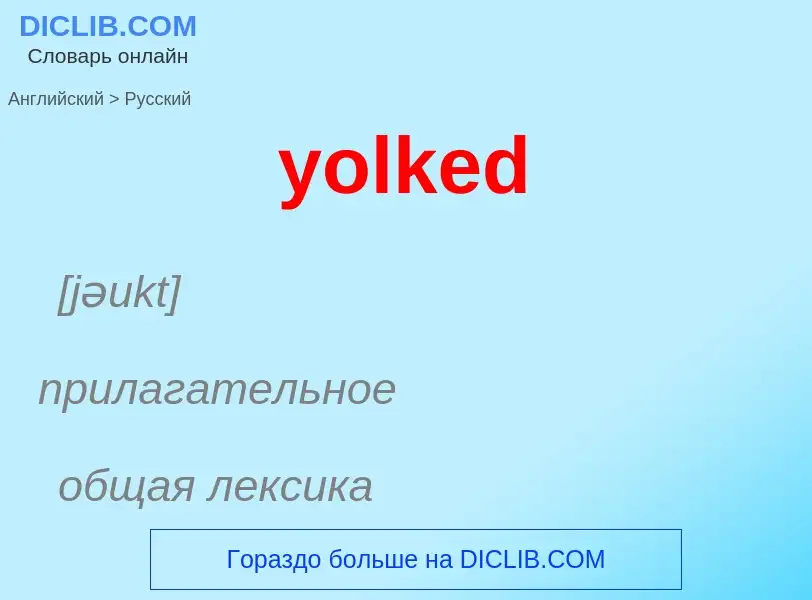Tradução e análise de palavras por inteligência artificial ChatGPT
Nesta página você pode obter uma análise detalhada de uma palavra ou frase, produzida usando a melhor tecnologia de inteligência artificial até o momento:
- como a palavra é usada
- frequência de uso
- é usado com mais frequência na fala oral ou escrita
- opções de tradução de palavras
- exemplos de uso (várias frases com tradução)
- etimologia
yolked - tradução para russo
[jəukt]
прилагательное
общая лексика
с желтком или желтками
[jəuk]
общая лексика
желток
желтковый
желточный
существительное
[jəuk]
общая лексика
желток (яйца)
сердцевина
суть
сущность
желток
специальный термин
жиропот
ланолин
Definição
Wikipédia

Among animals which produce eggs, the yolk (; also known as the vitellus) is the nutrient-bearing portion of the egg whose primary function is to supply food for the development of the embryo. Some types of egg contain no yolk, for example because they are laid in situations where the food supply is sufficient (such as in the body of the host of a parasitoid) or because the embryo develops in the parent's body, which supplies the food, usually through a placenta. Reproductive systems in which the mother's body supplies the embryo directly are said to be matrotrophic; those in which the embryo is supplied by yolk are said to be lecithotrophic. In many species, such as all birds, and most reptiles and insects, the yolk takes the form of a special storage organ constructed in the reproductive tract of the mother. In many other animals, especially very small species such as some fish and invertebrates, the yolk material is not in a special organ, but inside the egg cell.
As stored food, yolks are often rich in vitamins, minerals, lipids and proteins. The proteins function partly as food in their own right, and partly in regulating the storage and supply of the other nutrients. For example, in some species the amount of yolk in an egg cell affects the developmental processes that follow fertilization.
The yolk is not living cell material like protoplasm, but largely passive material, that is to say deutoplasm. The food material and associated control structures are supplied during oogenesis. Some of the material is stored more or less in the form in which the maternal body supplied it, partly as processed by dedicated non-germ tissues in the egg, while part of the biosynthetic processing into its final form happens in the oocyte itself.
Apart from animals, other organisms, like algae, especially in the oogamous, can also accumulate resources in their female gametes. In gymnosperms, the remains of the female gametophyte serve also as food supply, and in flowering plants, the endosperm.


![Diagram of a [[fish egg]]; the yolk is the area marked 'C' Diagram of a [[fish egg]]; the yolk is the area marked 'C'](https://commons.wikimedia.org/wiki/Special:FilePath/Fish Egg Diagram (1).jpg?width=200)




